Current-Resistance Effects Inducing Nonlinear Fluctuation Mechanisms in Granular Aluminum Oxide Nanowires
Abstract
1. Introduction
2. Materials and Methods
3. Results
3.1. DC Electrical Transport Measurements
3.2. Voltage-Noise Spectral Density Measurements
4. Discussion
5. Conclusions
Supplementary Materials
Author Contributions
Funding
Acknowledgments
Conflicts of Interest
References
- Abeles, B.; Cohen, R.W.; Stowell, W.R. Critical Magnetic Fields of Granular Superconductors. Phys. Rev. Lett. 1967, 18, 902–905. [Google Scholar] [CrossRef]
- Cohen, R.W.; Abeles, B. Superconductivity in Granular Aluminum Films. Phys. Rev. 1968, 168, 444–450. [Google Scholar] [CrossRef]
- Deutscher, G.; Fenichel, H.; Gershenson, M.; Grünbaum, M.; Ovadyahu, Z. Transition to Zero Dimensionality in Granular Aluminum Superconducting Films. J. Low Temp. Phys. 1973, 10, 231–243. [Google Scholar] [CrossRef]
- Maleeva, N.; Grünhaupt, L.; Klein, T.; Levy-Bertrand, F.; Dupre, O.; Calvo, M.; Valenti, F.; Winkel, P.; Friedrich, F.; Wernsdorfer, W.; et al. Circuit quantum electrodynamics of granular aluminum resonators. Nat. Commun. 2018, 9, 3889. [Google Scholar] [CrossRef] [PubMed]
- Grünhaupt, L.; Spiecker, M.; Gusenkova, D.; Maleeva, N.; Skacel, S.T.; Takmakov, I.; Valenti, F.; Winkel, P.; Rotzinger, H.; Wernsdorfer, W.; et al. Granular aluminium as a superconducting material for high-impedance quantum circuits. Nat. Mater. 2019, 18, 816–819. [Google Scholar] [CrossRef] [PubMed]
- Rotzinger, H.; Skacel, S.T.; Pfirrmann, M.; Voss, J.N.; Münzberg, J.; Probst, S.; Bushev, P.; Weides, M.P.; Ustinov, A.V.; Mooij, J.E. Aluminium-oxide wires for superconducting high kinetic inductance circuits. Supercond. Sci. Technol. 2016, 30, 25002. [Google Scholar] [CrossRef]
- Grünhaupt, L.; Maleeva, N.; Skacel, S.T.; Calvo, M.; Levy-Bertrand, F.; Ustinov, A.V.; Rotzinger, H.; Monfardini, A.; Catelani, G.; Pop, I.M. Loss Mechanisms and Quasiparticle Dynamics in Superconducting Microwave Resonators Made of Thin-Film Granular Aluminum. Phys. Rev. Lett. 2018, 121, 117001. [Google Scholar] [CrossRef]
- Schön, Y.; Voss, J.N.; Wildermuth, M.; Schneider, A.; Skacel, S.T.; Weides, M.P.; Cole, J.H.; Rotzinger, H.; Ustinov, A.V. Rabi oscillations in a superconducting nanowire circuit. arXiv 2019, arXiv:1907.04107. [Google Scholar] [CrossRef]
- Yamada, K.; Shinozaki, B.; Kawaguti, T. Weak localization and magnetoconductance in percolative superconducting aluminum films. Phys. Rev. B 2004, 70, 144503. [Google Scholar] [CrossRef]
- Frydman, A.; Naaman, O.; Dynes, R.C. Universal transport in two-dimensional granular superconductors. Phys. Rev. B 2002, 66, 052509. [Google Scholar] [CrossRef]
- Yamada, K.; Shinozaki, B.; Kawaguti, T. Percolation and weak localization in thin discontinuous aluminum films. Phys. E Low Dimens. Syst. Nanostruct. 2003, 18, 286–287. [Google Scholar] [CrossRef]
- Barone, C.; Romeo, F.; Pagano, S.; Adamo, M.; Nappi, C.; Sarnelli, E.; Kurth, F.; Iida, K. Probing transport mechanisms of BaFe2As2 superconducting films and grain boundary junctions by noise spectroscopy. Sci. Rep. 2014, 4, 6163. [Google Scholar] [CrossRef] [PubMed]
- Barone, C.; Romeo, F.; Pagano, S.; Di Gennaro, E.; Miletto Granozio, F.; Pallecchi, I.; Marrè, D.; Scotti di Uccio, U. Carrier-number fluctuations in the 2-dimensional electron gas at the LaAlO3/SrTiO3 interface. Appl. Phys. Lett. 2013, 103, 231601. [Google Scholar] [CrossRef]
- Barone, C.; Mauro, C.; Sambri, A.; Scotti di Uccio, U.; Pagano, S. Conductivity response of amorphous oxide interfaces to pulsed light illumination. Nanotechnology 2019, 30, 254005. [Google Scholar] [CrossRef]
- Barone, C.; Galdi, A.; Pagano, S.; Quaranta, O.; Méchin, L.; Routoure, J.-M.; Perna, P. Experimental technique for reducing contact and background noise in voltage spectral density measurements. Rev. Sci. Instrum. 2007, 78, 093905. [Google Scholar] [CrossRef]
- Routoure, J.; Wu, S.; Barone, C.; Méchin, L.; Guillet, B. A Low-Noise and Quasi-Ideal DC Current Source Dedicated to Four-Probe Low-Frequency Noise Measurements. IEEE Trans. Instrum. Meas. 2020, 69, 194–200. [Google Scholar] [CrossRef]
- Barone, C.; Rotzinger, H.; Mauro, C.; Dorer, D.; Münzberg, J.; Ustinov, A.V.; Pagano, S. Kondo-like transport and magnetic field effect of charge carrier fluctuations in granular aluminum oxide thin films. Sci. Rep. 2018, 8, 13892. [Google Scholar] [CrossRef]
- Deutscher, G.; Bandyopadhyay, B.; Chui, T.; Lindenfeld, P.; McLean, W.L.; Worthington, T. Transition to Localization in Granular Aluminum Films. Phys. Rev. Lett. 1980, 44, 1150–1153. [Google Scholar] [CrossRef]
- Chui, T.; Lindenfeld, P.; McLean, W.L.; Mui, K. Localization and Electron-Interaction Effects in the Magnetoresistance of Granular Aluminum. Phys. Rev. Lett. 1981, 47, 1617–1620. [Google Scholar] [CrossRef]
- Bachar, N.; Lerer, S.; Hacohen-Gourgy, S.; Almog, B.; Deutscher, G. Kondo-like behavior near the metal-to-insulator transition of nanoscale granular aluminum. Phys. Rev. B 2013, 87, 214512. [Google Scholar] [CrossRef]
- Gao, J.; Shen, S.Q.; Li, T.K.; Sun, J.R. Current-induced effect on the resistivity of epitaxial thin films of La0.7Ca0.3MnO3 and La0.85Ba0.15MnO3. Appl. Phys. Lett. 2003, 82, 4732–4734. [Google Scholar] [CrossRef]
- Hu, F.X.; Gao, J. Unusual current-induced electroresistance in epitaxial thin films of La0.8Ca0.2MnO3. Phys. Rev. B 2004, 69, 212413. [Google Scholar] [CrossRef]
- Gao, J.; Hu, F.X. Current-sensitive electroresistance and the response to a magnetic field in La0.8Ca0.2MnO3 epitaxial thin films. J. Appl. Phys. 2005, 97, 10H706. [Google Scholar] [CrossRef]
- Barone, C.; Adamo, C.; Galdi, A.; Orgiani, P.; Petrov, A.Y.; Quaranta, O.; Maritato, L.; Pagano, S. Unusual dependence of resistance and voltage noise on current in La1-xSrxMnO3 ultrathin films. Phys. Rev. B 2007, 75, 174431. [Google Scholar] [CrossRef]
- Slonczewski, J.C. Current-driven excitation of magnetic multilayers. J. Magn. Magn. Mater. 1996, 159, L1–L7. [Google Scholar] [CrossRef]
- Berger, L. New origin for spin current and current-induced spin precession in magnetic multilayers. J. Appl. Phys. 2001, 89, 5521–5525. [Google Scholar] [CrossRef]
- Wu, T.; Ogale, S.B.; Garrison, J.E.; Nagaraj, B.; Biswas, A.; Chen, Z.; Greene, R.L.; Ramesh, R.; Venkatesan, T.; Millis, A.J. Electroresistance and Electronic Phase Separation in Mixed-Valent Manganites. Phys. Rev. Lett. 2001, 86, 5998–6001. [Google Scholar] [CrossRef]
- Markovich, V.; Rozenberg, E.; Yuzhelevski, Y.; Jung, G.; Gorodetsky, G.; Shulyatev, D.A.; Mukovskii, Y.M. Correlation between electroresistance and magnetoresistance in La0.82Ca0.18MnO3 single crystal. Appl. Phys. Lett. 2001, 78, 3499–3501. [Google Scholar] [CrossRef]
- Kogan, S. Electronic Noise and Fluctuations in Solids; Cambridge University Press: Cambridge, UK, 1996; ISBN 9780521460347. [Google Scholar]
- Dolgin, B.; Lorite, I.; Kumar, Y.; Esquinazi, P.; Jung, G.; Straube, B.; de Heluani, S.P. Conductivity fluctuations in proton-implanted ZnO microwires. Nanotechnology 2016, 27, 305702. [Google Scholar] [CrossRef]
- Barone, C.; Rotzinger, H.; Mauro, C.; Dorer, D.; Ustinov, A.V.; Pagano, S. Unconventional magnetic field effect on noise properties of AlOx thin films in Kondo-like transport regime. Eur. Phys. J. Spec. Top. 2019, 228, 697–702. [Google Scholar] [CrossRef]
- Chen, C.C.; Chou, Y.C. Electrical-Conductivity Fluctuations near the Percolation Threshold. Phys. Rev. Lett. 1985, 54, 2529–2532. [Google Scholar] [CrossRef] [PubMed]
- Rudman, D.A.; Calabrese, J.J.; Garland, J.C. Noise spectra of three-dimensional random metal-insulator composites. Phys. Rev. B 1986, 33, 1456–1459. [Google Scholar] [CrossRef] [PubMed]
- Barone, C.; Pagano, S.; Neitzert, H.C. Transport and noise spectroscopy of MWCNT/HDPE composites with different nanotube concentrations. J. Appl. Phys. 2011, 110, 113716. [Google Scholar] [CrossRef]
- Gefen, Y.; Shih, W.-H.; Laibowitz, R.B.; Viggiano, J.M. Nonlinear Behavior near the Percolation Metal-Insulator Transition. Phys. Rev. Lett. 1986, 57, 3097–3100. [Google Scholar] [CrossRef] [PubMed]
- Nandi, U.N.; Mukherjee, C.D.; Bardhan, K.K. 1/f noise in nonlinear inhomogeneous systems. Phys. Rev. B 1996, 54, 12903–12914. [Google Scholar] [CrossRef] [PubMed]
- Christen, T.; Donzel, L.; Greuter, F. Nonlinear resistive electric field grading part 1: Theory and simulation. IEEE Electr. Insul. Mag. 2010, 26, 47–59. [Google Scholar] [CrossRef]
- Yang, X.; Hu, J.; Chen, S.; He, J. Understanding the Percolation Characteristics of Nonlinear Composite Dielectrics. Sci. Rep. 2016, 6, 30597. [Google Scholar] [CrossRef]

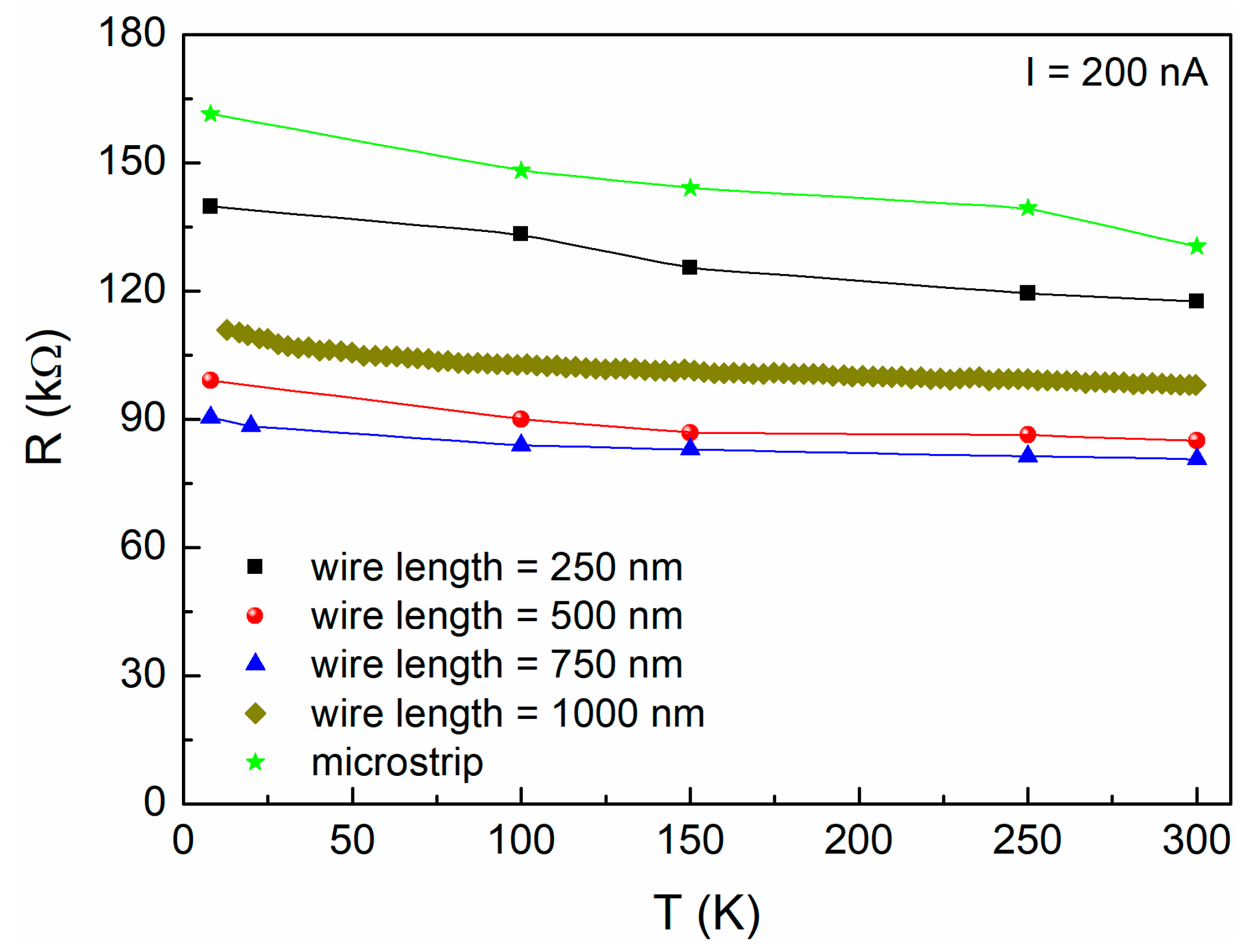
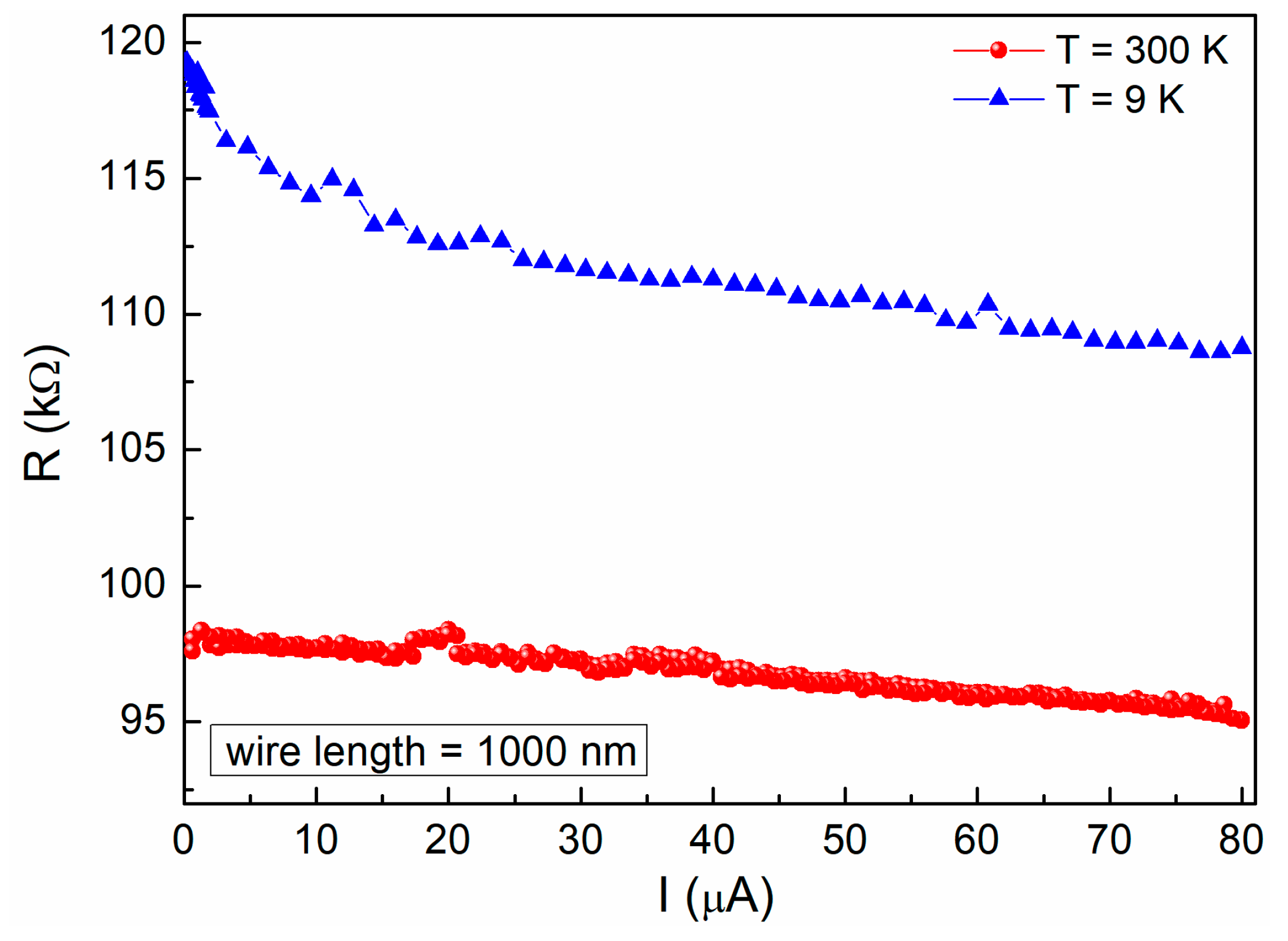
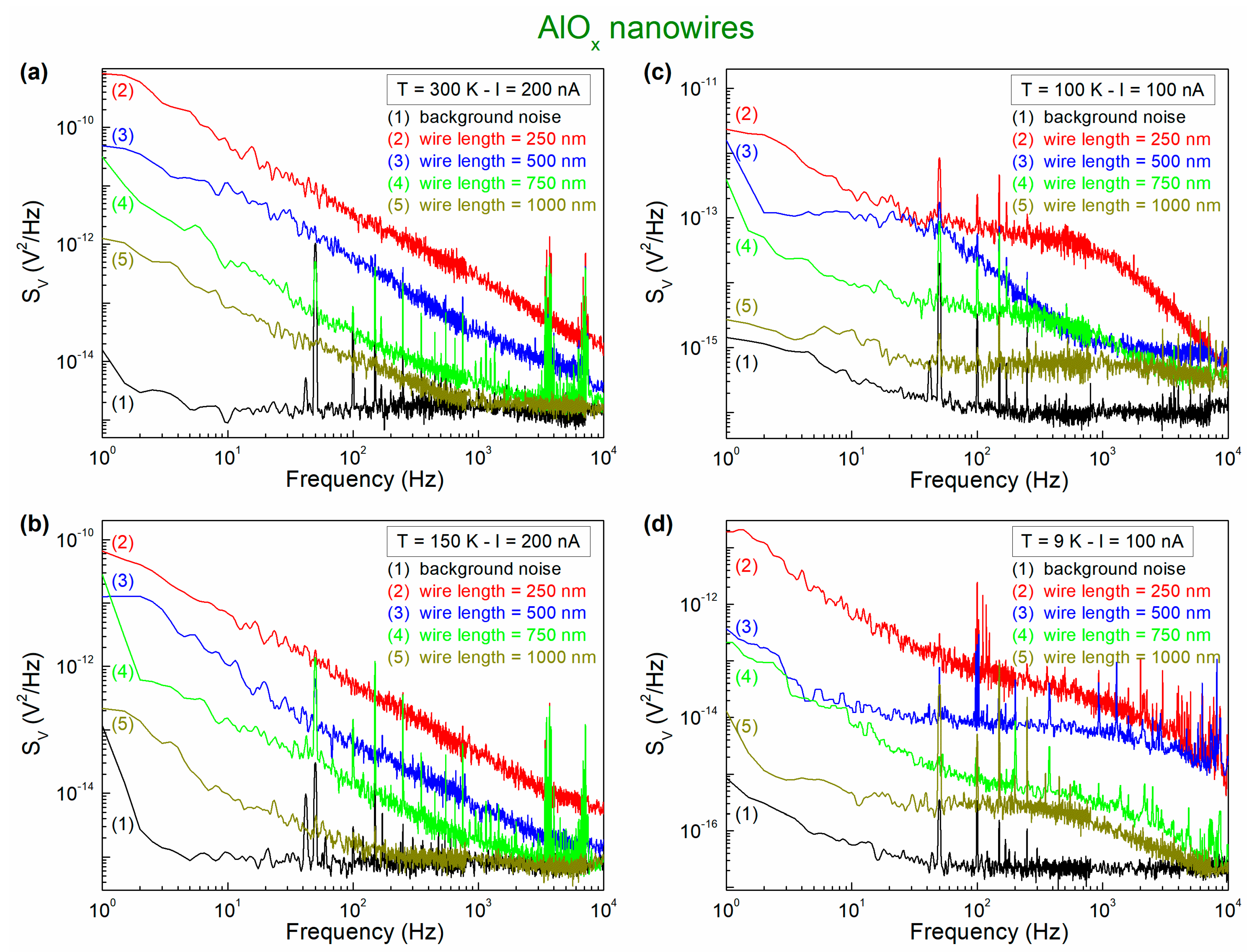
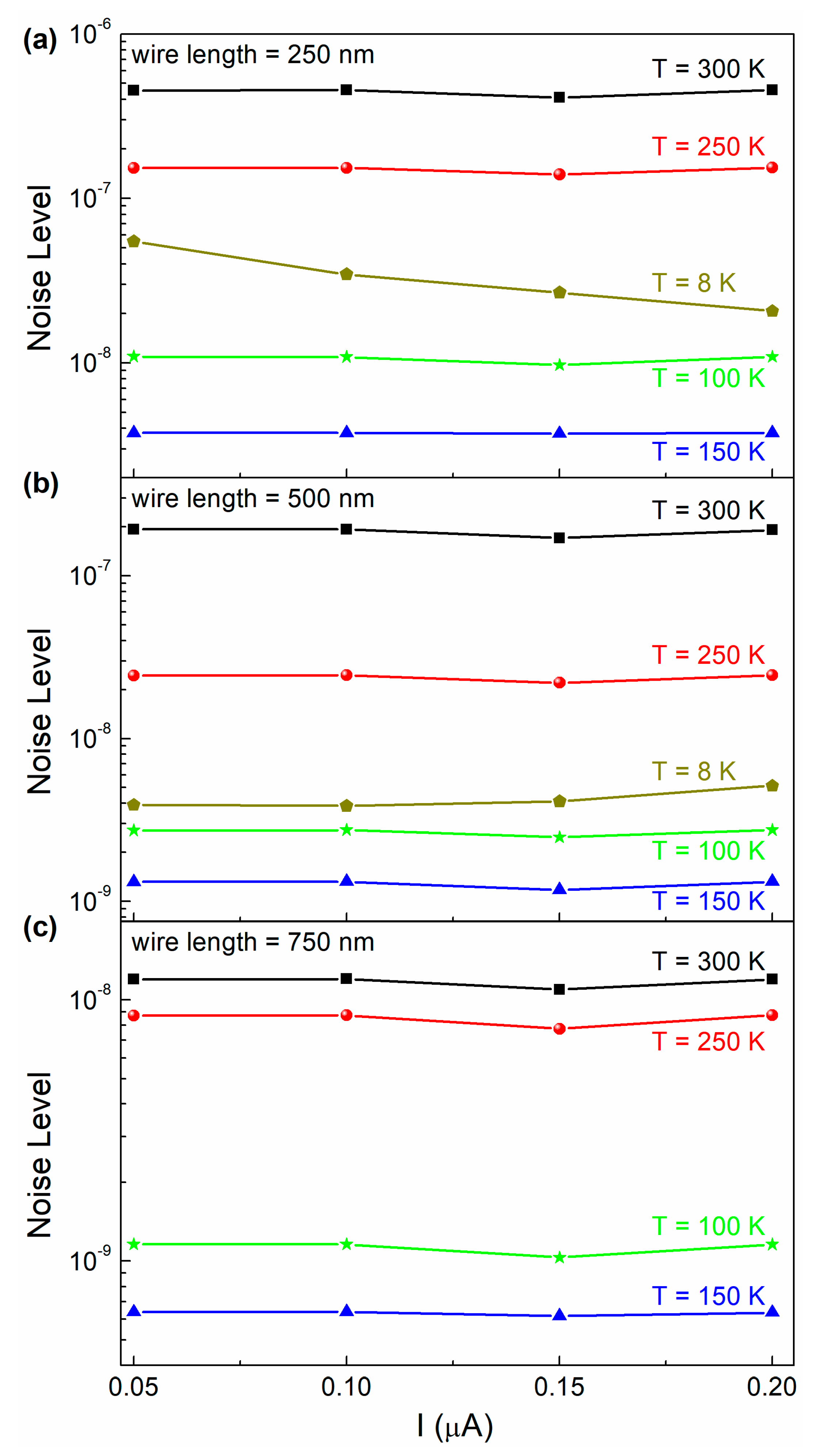
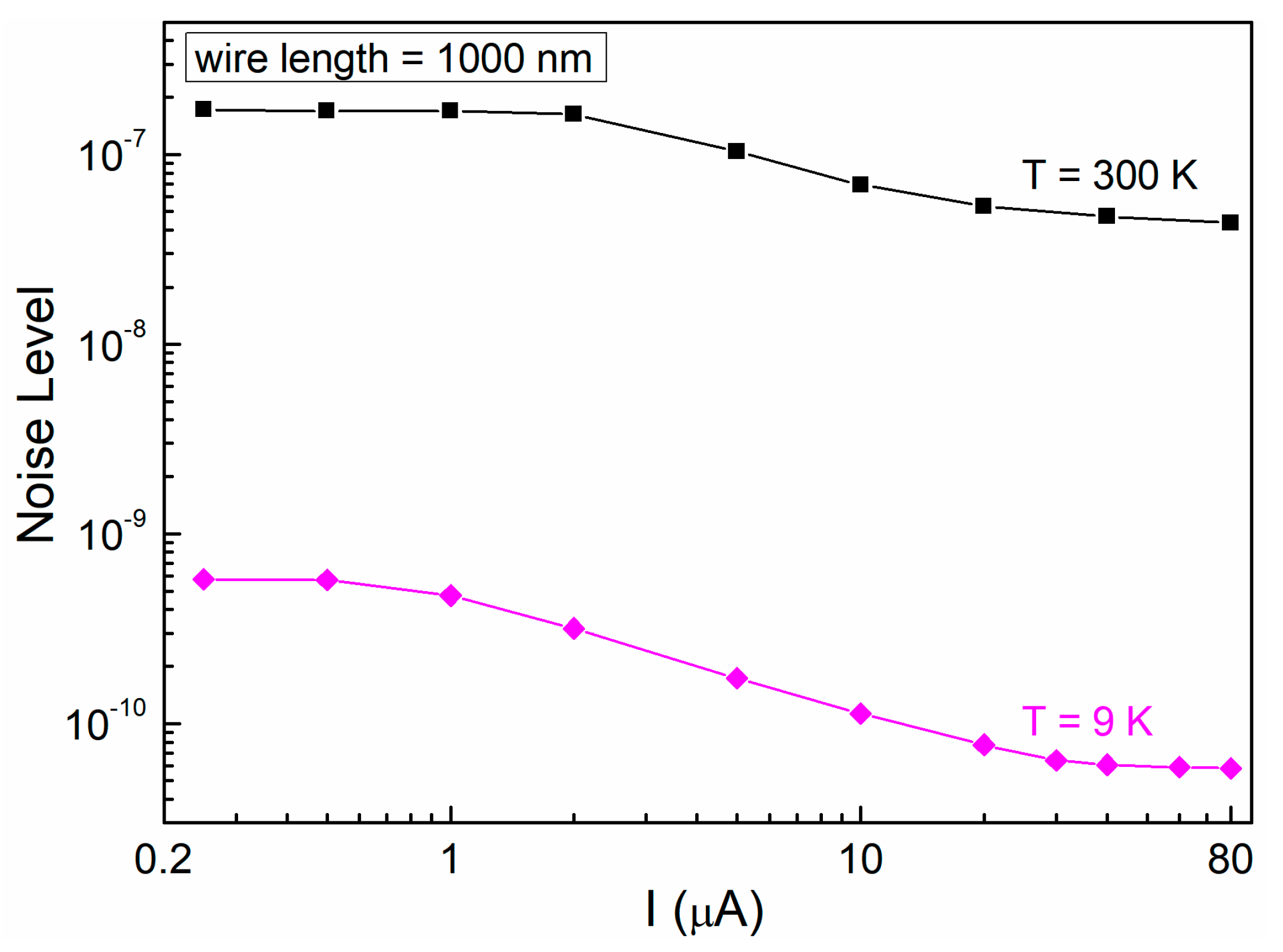
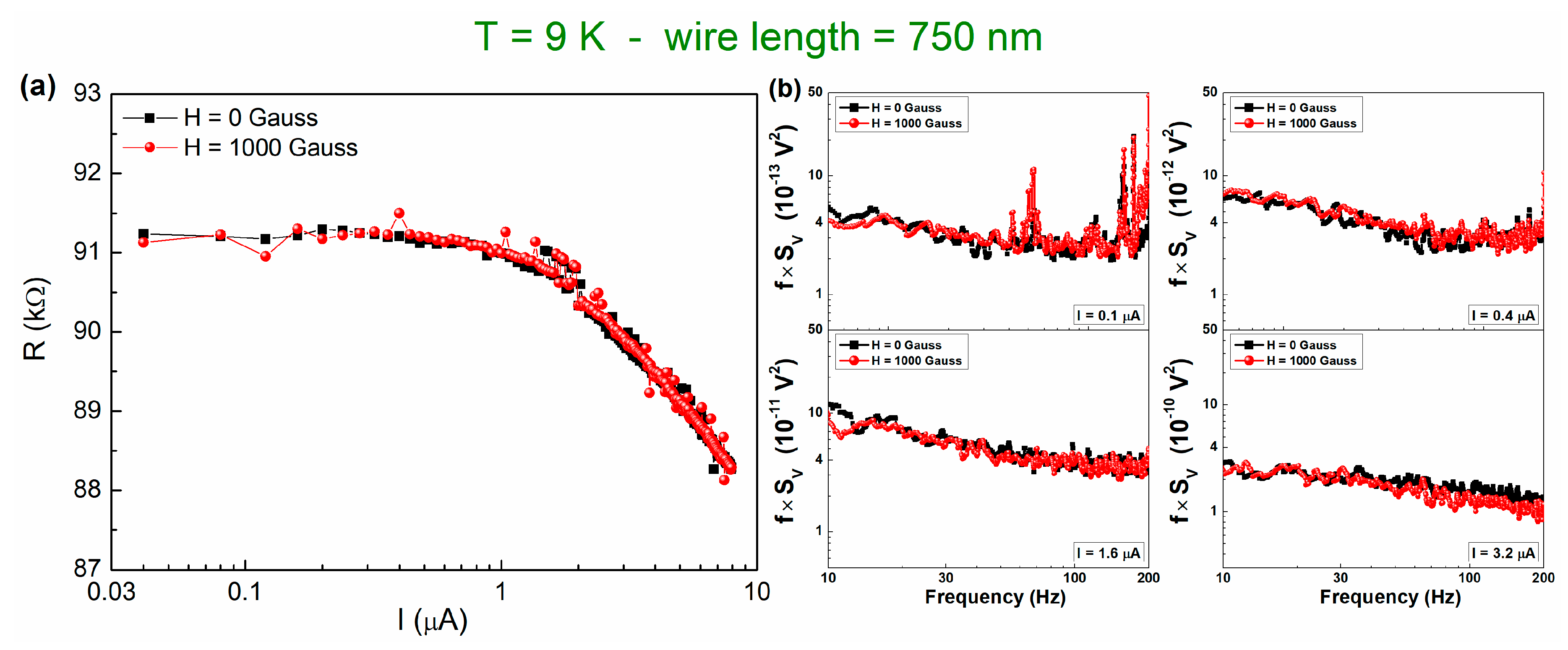
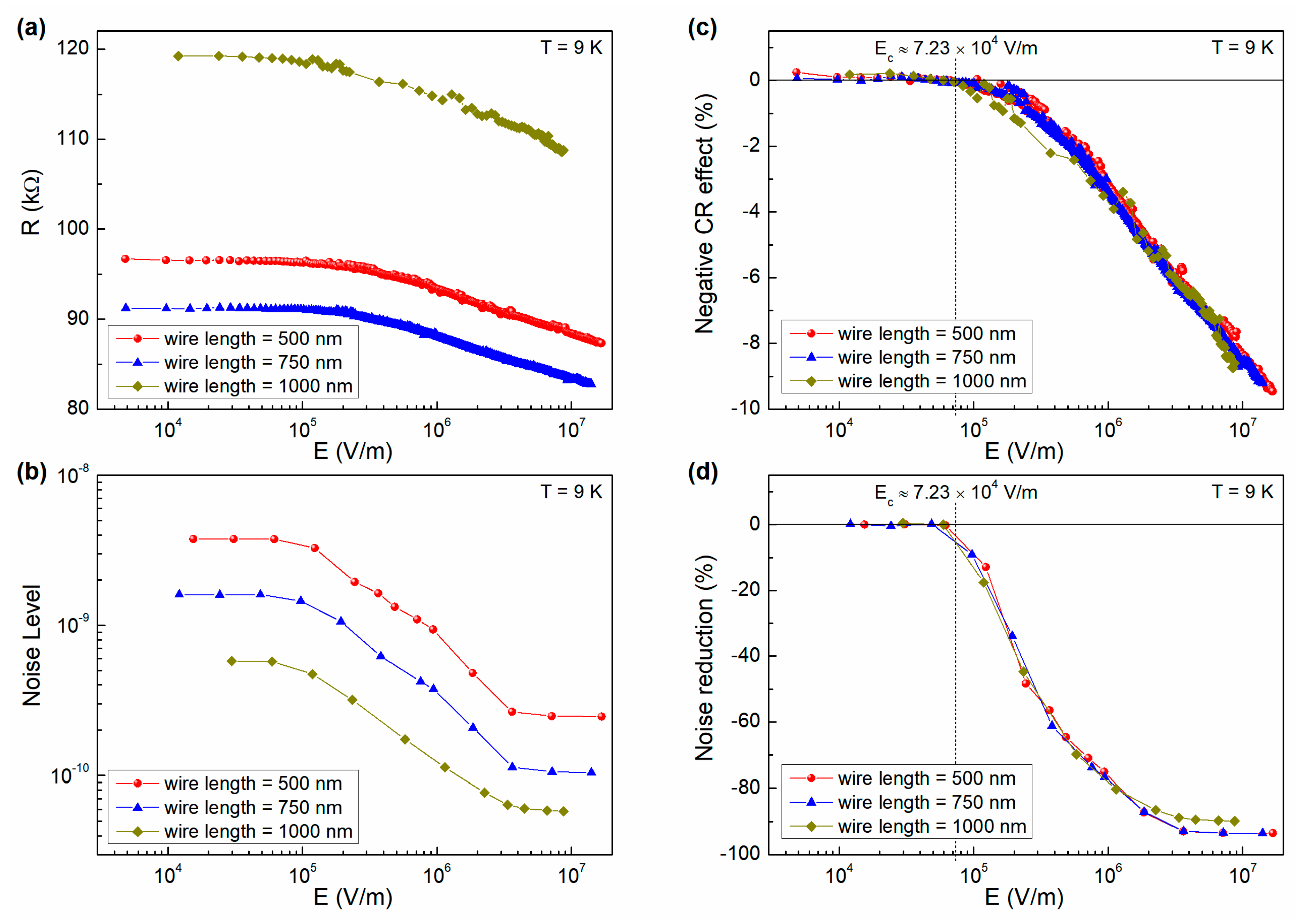
© 2020 by the authors. Licensee MDPI, Basel, Switzerland. This article is an open access article distributed under the terms and conditions of the Creative Commons Attribution (CC BY) license (http://creativecommons.org/licenses/by/4.0/).
Share and Cite
Barone, C.; Rotzinger, H.; Voss, J.N.; Mauro, C.; Schön, Y.; Ustinov, A.V.; Pagano, S. Current-Resistance Effects Inducing Nonlinear Fluctuation Mechanisms in Granular Aluminum Oxide Nanowires. Nanomaterials 2020, 10, 524. https://doi.org/10.3390/nano10030524
Barone C, Rotzinger H, Voss JN, Mauro C, Schön Y, Ustinov AV, Pagano S. Current-Resistance Effects Inducing Nonlinear Fluctuation Mechanisms in Granular Aluminum Oxide Nanowires. Nanomaterials. 2020; 10(3):524. https://doi.org/10.3390/nano10030524
Chicago/Turabian StyleBarone, Carlo, Hannes Rotzinger, Jan Nicolas Voss, Costantino Mauro, Yannick Schön, Alexey V. Ustinov, and Sergio Pagano. 2020. "Current-Resistance Effects Inducing Nonlinear Fluctuation Mechanisms in Granular Aluminum Oxide Nanowires" Nanomaterials 10, no. 3: 524. https://doi.org/10.3390/nano10030524
APA StyleBarone, C., Rotzinger, H., Voss, J. N., Mauro, C., Schön, Y., Ustinov, A. V., & Pagano, S. (2020). Current-Resistance Effects Inducing Nonlinear Fluctuation Mechanisms in Granular Aluminum Oxide Nanowires. Nanomaterials, 10(3), 524. https://doi.org/10.3390/nano10030524






